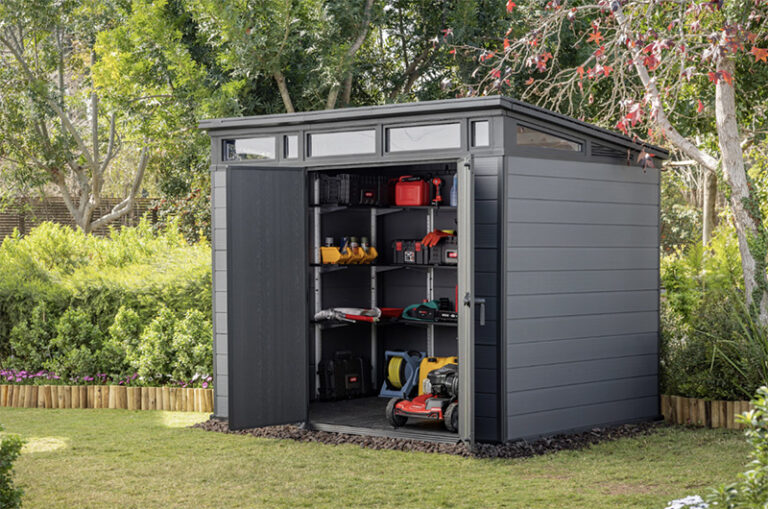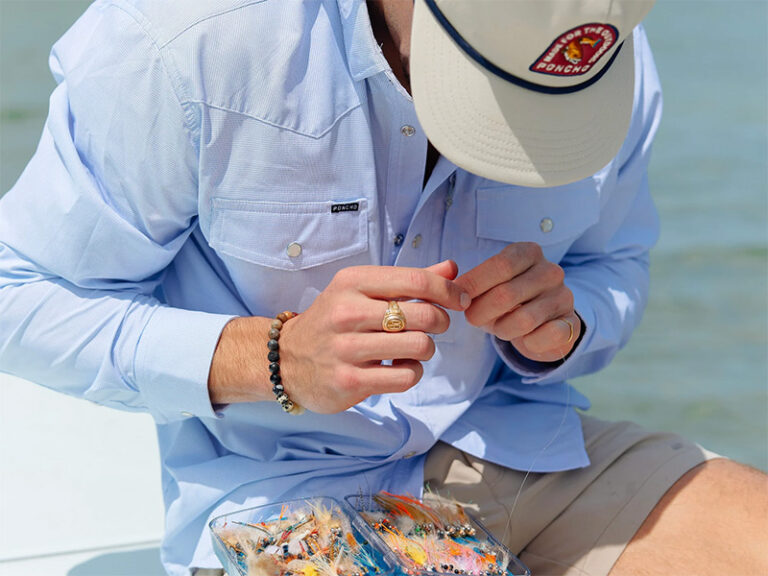The groundbreaking ceremony of the Centennial Trail in 1989 marked a new chapter for spokane recreation, and a new vision for most of the Spokane River. The freshly paved ribbon of asphalt, albeit incomplete, initiated a swell in jogging, Rollerblading and bike riding in the Spokane area. In the same year as the Tiananmen Square massacre, the Velvet Revolution, and the fall of the Berlin Wall, the Spokane community launched an ambitious goal for an historical-minded trail to connect Coeur d’Alene, Idaho with Nine Mile Falls, Washington – a two-state paved and preserved pathway from the confluence of the Spokane and Little Spokane Rivers to the east side of Coeur d’Alene Lake, roughly 60 miles in length.
Now, 20 years later, why isn’t it done?
To be fair, the Centennial Trail is a remarkable feat, a beloved thoroughfare for thousands of people, and a harmonic corridor through many of Spokane’s most-treasured places. It’s home to the MS Walk, the Windermere Marathon and the Justin C. Haeger 10 Miler to name a few. Considering many of their dorms and apartments overlook the Trail, it’s the launch site for countless workouts by student athletes at SFCC, SCC and Gonzaga. Even the O’Doherty’s Flying Irish owe part of their existence to the running route convenience of the Centennial Trail.
For an overall historical perspective, consider that Spokane’s Hoopfest launched the same year the Centennial Trail opened. Bloomsday celebrated its adolescent 13th anniversary that year. Back in 1989, The Met still belonged to Metropolitan Mortgage & Securities and The Fox Theater was still a movie theater. The Academy Award for Best Picture went to Rain Main, and the song of the year was “Don’t Worry Be Happy” by Bobby McFerrin.
To some, those 20 years are the blink of an eye, while others who commute everyday to class or work via the Trail might believe it’s much older. Undoubtedly, as much as the Centennial Trail is loved and appreciated, it is often misunderstood and undervalued. Depending on the lens through which one views the Centennial Trail, one can see many different things. Some view the path as a corridor for fitness, others for non-motorized commuting, and others for community outreach and connectivity, and still others revere the natural and environmental principles of preserving the Spokane River for recreation and future generations. Most users are actually a combination of those visions, but the complexity of those viewpoints paired with real-life economic logistics often hinders overall Centennial Trail progress.
Gauging the success, power or influence of the Centennial Trail is very similar to any recreational survey. If you ask 10 Trail users, you will likely receive 21 opinions. No one questions the fact that the Centennial Trail is a recreational artery, and everyone unanimously praises the adventure, the economic growth, and the preserved environmental capital. But on the 20th Anniversary, there’s a vista on the Trail that speaks to it’s past and it’s future, and it’s well worth highlighting. More about that later.
Leaping back in time several decades, the true godfather of the Centennial Trail would have to be Aubrey L. White – the very namesake for a 10 mile stretch of the Trail on the west side of the Spokane River through Riverside State Park. Clearly, no one has done more for Spokane park land and preservation than “Horsetrader” White. The August 1940 National Municipal Review credited him with “giving Spokane more park land per person than any city in America.” The Spokane Mountaineers made Aubrey White an Honorary Member, and wrote the following about him in their website profile:
“As park board president, Aubrey White personally sought out property owners to obtain desirable properties for park lands, and he acquired 1,000 acres through donations, trades, and low-cost acquisition. He landed another 400 acres through pitches to developers for their undesirable lands. Under his guidance over a 14-year period, the Spokane park system grew from 273 to 2,272 acres. A big help was his “powerhouse,” an influential group that included [William H.] Cowles, Louis M. Davenport, John A. Finch, Joel E. Ferris, and Robert L. Rutter, whom he would invite for lunch and an afternoon drive to see proposed park acquisitions.”
The Aubrey White legacy sparked a remarkable trend that ultimately influenced the development of the Dishman Hills Natural Area, Mount Spokane State Park, Minnehaha Rocks (aka John Shields Park) and The Bowl and Pitcher (aka Riverside State Park) – one of the lynchpins for the Centennial Trail system. It’s truly difficult to trace a line through any part of urban Spokane, and not touch upon an area somehow influenced by White. No doubt, the Centennial Trail could not have been conceived without the massive Aubrey White groundwork.
Skip ahead to 1979, on the heels of the EXPO ’74 World’s Fair, the Spokane County Parks proposed a bicycle/pedestrian pathway along the Spokane River, a path that would run from Argonne to the Idaho border. The Parks and Recreation Committee of the Spokane Valley Chamber of Commerce furthered this idea in 1984 as they also entertained recreational opportunities along the river. In 1986, they proposed a 10.5-mile trail to be built in conjunction with the upcoming Washington Centennial. Creative thinking quickly expanded this idea into a coordinated effort with parks and recreation facilitators in Coeur d’Alene so that a much longer trail could be completed in time to celebrate the respective state centennials of Washington (1989) and Idaho (1990).
The pivotal planning years in the mid-80s set the stage for the ever-increasing project. One of the first steps included building a dedicated planning committee that came to be known as The Committee of Six. This initial group included Sam Angove, Denny Ashlock, Dean Moorehouse, Joe Custer, Norm Ventris and Phyllis Campbell. This crew initiated the difficult, ground-breaking tasks of securing land, generating private funding for a master plan, as well as developing sources for Federal, State and citizen funding.
On May 15th 1987, the internationally recognized architectural team of Jones & Jones was chosen to develop a master plan for the Centennial Trail. The initial conversations and letters morphed a bit in the first month, as Denny Ashlock pressed to have the plan expanded so the trail could run all the way to Riverfront Park. Yet, when the details were finalized, the Jones & Jones Master Plan aimed to produce a comprehensive study determining such needs as suitable trail routes, land acquisitions, design standards, continued maintenance, and total estimates of construction costs with inflation. The planning and recommendations alone directed Jones & Jones to coordinate with Washington State Department of Transportation, the Spokane Highway Department, the Spokane County Parks Department, the Spokane Parks Department and, for preparing land acquisitions, consult the Washington State Parks and Recreation Commission. That long list of agencies, while crucial, emphasizes why more places don’t have 60-mile-long urban paths.
The Master Plan was complete and the concept summarized in 1987. Steve Durrant, of Jones & Jones, wrote: “…This is an exciting and significant project that deserves national attention not only because of the historic story to be told of exploration and settlements of the Northwest, but also the recreation value of a sixty-plus mile river corridor running through a metropolitan area, and the environmental qualities that can be protected under public stewardship.”
Meanwhile, Don Kardong, already a pillar in the Spokane running community, stepped into the role of Co-Chair of the Centennial Trail Steering Committee. Along with Joe Custer, Kardong labored alongside the various parties and decision-making entities during the time the trail was being planned and constructed. Before receiving any Federal funding, an Environmental Assessment study of the route was required.
Don Kardong recalls, “Well, a number of legitimate archeological sites were identified along the route of the trail, some Native American, some early Spokane pioneer, but I loved a story told to me by Sam Angove, the Spokane County Parks Director who played a major role in the development of the trail. He knew every bit of land along the route—its history, ownership, issues, and so on—and at one point he was informed by one of the individuals doing the archeological assessment that a certain area had been used by Native Americans as a camping site. “How do you know that?” Sam asked. “Well, you can see the charred rocks where they had their fires,” the guy answered. “It’s clearly a Native American site.” “No,” Sam responded. “Those charred rocks are from a 1956 Central Valley High School kegger. I’m the guy that broke it up.”
Ultimately, significant Federal funding did arrive thanks to the efforts of Speaker Tom Foley (D-WA), Norm Dicks (D-WA) and Larry Craig (R-ID). The Miracle Mile started to fall into place, just as the first dozen miles of pavement started to unfold. The fund raising was never easy, but each time a new section appeared the Centennial Trails’ notoriety grew and Spokane, Post Falls, Spokane Valley, Liberty Lake and Coeur d’Alene increasingly embraced their public path.
In the past decade, the Centennial Trail has generated enough heat to spark other trail programs such as the Cheney Fish Lake Trail, the Hiawatha Trail, the Columbia Plateau Trail, and even the Ben Burr Connecting Trail. There’s growing recognition for the Iron Bridge, near Trent and Hamilton, and the connections it will allow. Though many of these trails are independent, they align with a popular dream to someday accumulate a grand network of non-motorized paths. The draw to the open air, to the health benefits, and the rewarding blend of northwest scenic riches insure that all of these trails will provide a unique legacy.
Big changes in recent years have enhanced the Trail even further. Kendall Yards received a facelift. The Sandifur Bridge opened up a vital connection point. Liberty Lake now features a bridge over Interstate 90. The bridge at Barker Road will be completed shortly. Clearly, these are all victories, and proof that these past 20 years are a steady chain of incremental successes.
These very same increments underline the continued population and economic growth in the Inland Northwest. “In our lifetime Spokane and Coeur d’Alene will be one city, fully developed. If we don’t provide for open space and recreation on the river now, it won’t happen”. Hard to believe that quote, included in the Jones & Jones Master Plan, comes from, then-Idaho Governor, Cecil Andrus clear back in 1987.
More area people equals more trail users, which in turn require more parking spots at trailheads and a few more bathrooms. In a perfect world, there would also be a few more drinking fountains and better lighting in certain urban spots. A conversation with Kaye Turner, of Friends of the Centennial Trail, revealed, “When the Centennial Trail was built, unfortunately no maintenance funds were set aside specifically for trail upkeep. As such, this type of funding is an ongoing issue.” Upgraded signs and vandalized benches or trash containers aren’t cheap for the departments that govern each section. Thankfully, the Adopt-A-Mile program works with many generous local sponsors, and those sponsors typically fuel multiple cleanups per year as well as chip in with other services from time to time.
Yet, money or not, some ongoing issues still exist. Hundreds of people have noticed that there’s passage underneath the north side of the Monroe Street Bridge, however it’s blocked by chain link fence. It teases people to pass under the bridge safely, and then forces pedestrians and bicyclists to cross Monroe via a crosswalk. Furthermore, the dream of a River Greenway District, proposed by Steve Faust of Friends of the Falls, is quite frankly the only proposal on the table to address most of the Spokane River users’ ideas. It doesn’t have to be perfect, but the dialogue needs to continue.
Earlier, I mentioned a vista on the Centennial Trail that speaks to its past and its future. That noteworthy spot would have to be the Post Street Bridge. Built in 1916 and expanded in 1930, the bridge is undeniably old and broken. On the other hand, it’s ideally located overlooking major rapids and waterfalls right in the heart of Spokane. This same bridge served on the Bloomsday course for years. It connects directly to Riverfront Park, and it actually funnels people right past the “Joy Of Running” statues along Spokane Falls Blvd. The age, significance and prominence of the Post Street Bridge truly set it apart. It’s also arguably the most expensive 350 feet to refurbish on the entire Trail, which possibly relegates it to the one piece that could takes another couple years to finish.
But the Centennial Trail will be finished. Better still, it will be extended – in both directions. Like so many users that take it in one step at a time, there’s a far-reaching list of long time supporters and behind-the-scenes workers who keep adding to the project a little bit at a time. Their vision stretches well past the next 20 years, and creates a legacy for many generations to come. The labor paid out by the initial Committee of Six back in 1986 actually makes it difficult to imagine enjoying the Spokane River without the Centennial Trail. In some minds, they are inseparable.
Don Kardong recently wrote, “On at least two occasions when I attended a presentation or dedication somewhere along the trail, an osprey would drift past with a fish in its talons. The most recent was during the dedication of the Sandifur Bridge, when one of the Spokane Indian elders was in the middle of a blessing and the osprey suddenly cruised overhead. It felt like the elder had elicited a positive response from nature to the community’s efforts to protect the river.”
In conclusion, can you imagine what it would take if this project was set into motion in 2009 rather than 1989? Also, wouldn’t it be hilarious if the Centennial Trail were finished before the North South Freeway?
Gaps in the Trail:
MOST REGULAR CENTENNIAL TRAIL users are aware that there are a few gaps in the trail. Over time there’s a tendency to accept the gaps as inevitable or permanent, but they’re not. The current Centennial Trail Committee is working on plans to fill those incomplete parts, and there’s no better time than now to support efforts to complete the unfinished sections.
Here’s a succinct description of the gaps as well as proposed remedies from the Friends of the Centennial Trail website.
1. THE CREATION OF TWO MISSION PARK UNDERPASSES: To facilitate a safer crossing at the Mission Street intersection, an underpass would be constructed. It would provide a much safer outlet located along Upriver Drive. A second underpass would be constructed under the railroad line located inside Mission Park. Together, these two underpasses would “connect” the entire Park, while also providing much safer transportation routes for children using the new Mission Park Pool.
2. BUILDING A CONNECTING ROUTE FROM RIVERFRONT PARK TO THE WEST CENTRAL NEIGHBORHOOD: The Trail would run through Riverfront Park to the runners statues, then across the Post Street Bridge to the north side of the Spokane River, then through Veterans Park and under the Monroe Street Bridge, to eventually go through the Kendall Yards development into the West Central Neighborhood. This vital “northwest connector” route into downtown Spokane would be widely used for both recreational and get-to-work commuting.
3. TRAIL CONSTRUCTION FROM THE WEST END OF KENDALL YARDS TO BOONE AVENUE/SUMMIT BLVD: From the westernmost border of the Kendall Yards heading north, the Trail would descend approximately 50 feet to an abandoned railroad grade paralleling Summit Boulevard. From the end of the rail line, the Trail would then turn due north, traversing gently up the hillside toward the intersection of Summit Boulevard and Boone Avenue.
4. FILLING THE GAP FROM BOONE AVENUE/SUMMIT TO THE T.J. MEENACH BRIDGE: Following Summit Blvd to Pettet Drive, then turning north onto Pettet Drive at Doomsday Hill, is the opportunity to create an on-road bike route that would be improved with signage, striping and traffic-calming elements included on Summit, Mission and West Point avenues to Pettet Drive. Sidewalks would be improved throughout this segment. From West Point north to the viewpoint, an off road multi-use trail would be built on the west side of Pettet Drive. North of the viewpoint, the roadway surface would be rearranged to provide for a 14-foot multi-use trail on the west side of the roadway. The Trail would continue downhill along Pettet Drive to the T.J. Meenach Bridge.
5. THE REALIGNMENT OF THE TRAIL FROM UPRIVER DRIVE TO MARINGO DRIVE: Following the Trail east from Boulder Beach, the Trail moves onto the shoulder of Upriver Drive for approximately five blocks. Here, the Trail would be re-routed to head north along Maringo Drive for approximately 3/4 mile. At the Argonne Bridge, the Trail would go underneath the new Argonne Bridge (space has been provided for this routing during the bridge rebuild). The Trail would move back up to Maringo Drive, and continue heading east to the Maringo Trailhead. This rerouting would eliminate approximately 2 miles of the Trail route away from busy arterial streets.
6. THE POST FALLS GAP: To this day, there’s a disputed and unclear section of trail through the heart of Post Falls, Idaho. On a map, a horseshoe solution appears okay. But, if you’re biking or running to Coeur D’ Alene from the state line, it’s confusing and taxing. Further research unearthed more conflict than solutions.













